The clandestine world of John Wick is populated by a seemingly never-ending array of assassins and contract killers. As the series has progressed, these violent professionals who are looking to either aid John in his ever-expanding quest for retribution or bring it to a bloody, fatal end have become increasingly memorable both as characters and as on-screen combatants. This has been accomplished by casting faces familiar to genre fans and giving numerous nods, of varying subtlety, to action films of years past.
The latest entry, John Wick: Chapter 4, continues this trend by adding martial arts superstar Donnie Yen as the newest well-dressed ass-kicker gunning for the titular former hitman. Yen’s resume, which includes starring in such modern kung fu classics as Iron Monkey, Hero, and the Ip Man tetralogy, is enough by itself to make any die-hard action lover salivate with anticipation. Adding to that excitement is the fact Donnie’s character, Caine, is paying direct tribute to an enduring archetype of the genre with 75 years of history: This gun-toting, sword-brandishing adversary to John Wick is blind.
Where did the idea of the “blind warrior” originate in pop culture, and why does it continue to resonate with audiences? The concept first took root with a single fictional character— the blind Japanese swordsman Zatoichi. Initially introduced in 1948 as a minor figure in a single short story, nearly 15 years later the character was expanded on and brought to the silver screen with a 1962 adaptation titled The Tale of Zatoichi. The film proved so successful at the box office in its native Japan that over the next 16 years, a staggering 25 films and 100 episodes of television were produced featuring the character, all starring the same actor in the title role: Shintaro Katsu.
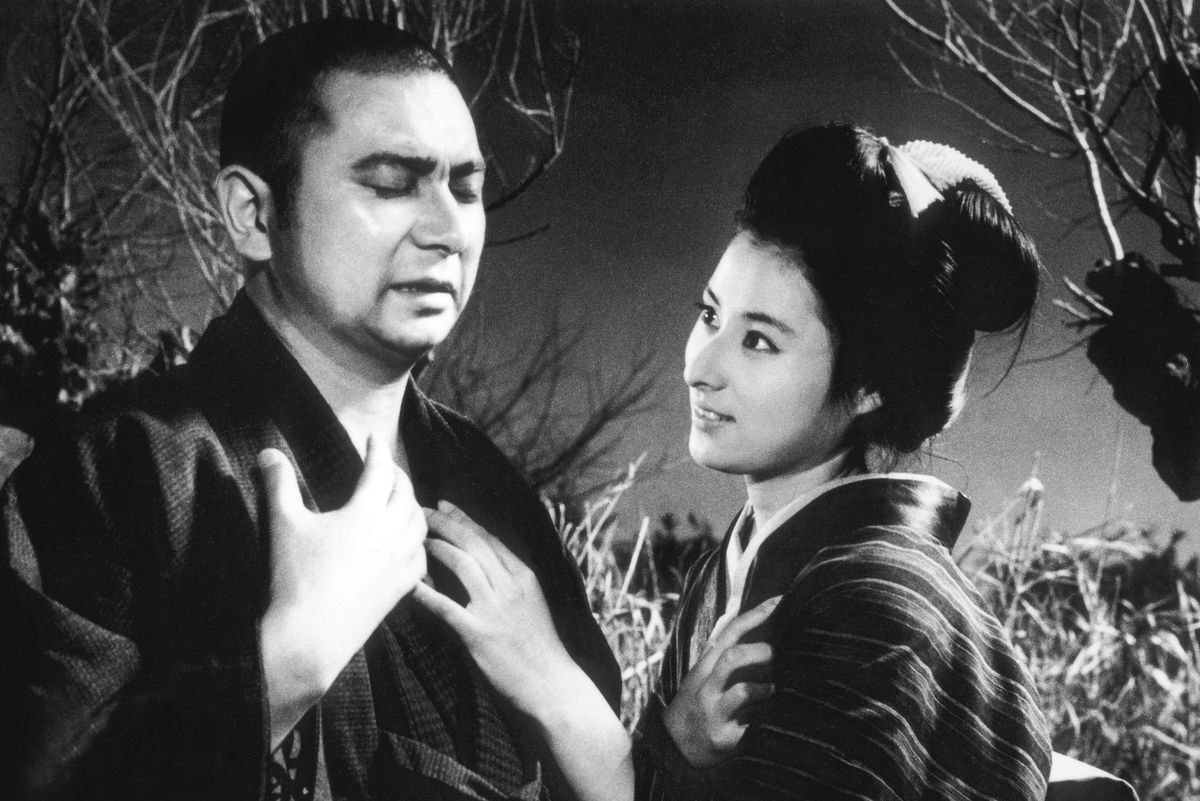
Katsu was not a typical action star of the period. His round face, average height, and unimposing physicality seemed more suited to comedy or secondary roles than for a chanbara (the Japanese term for “sword fighting”) lead. He brought a sensitive, warm, and at times playful blue-collar presence to the Zatoichi character that was more “favorite uncle” than “noble samurai.” It was a perfect match of star and material.
The concept of Zatoichi is deceptively simple. The unassuming Ichi (“Zato” was a social title for blind men during the late Edo period, the lowest of four ranks; Zatoichi roughly translates to “Poor Blind Ichi”) is a jovial masseur who travels from village to village looking for work. He never seeks out trouble or lets on that he is a master with a blade he keeps hidden in his walking stick. He only reveals his expert-level swordsmanship when absolutely necessary to defend himself or others in need. The character is equal parts a lovable everyman and guardian angel of the downtrodden. Ichi’s disability, which at the time was thought of as a simple novelty to separate the film from so many other chanbara films in a crowded marketplace, likely spoke to a generation who had only recently moved forward from the devastation and tragedy of World War II. Zatoichi not only survived and lived peacefully with his setback; he flourished and reformed it into a defining strength.
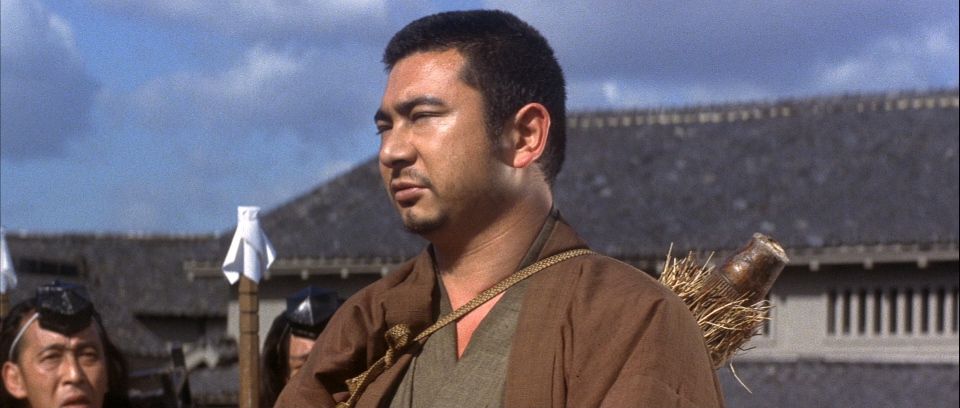
One of the other keys to the success of the Zatoichi franchise was its commitment to consistency. Shintaro Katsu was always front and center for each installment, anchoring everything that happened on screen. Behind the scenes, the series was produced by a small rotating group of creatives, with many of the same directors, writers, and other actors working on multiple entries. This allowed them to keep a mostly consistent tone, as well as a tried-and-true story structure that was rarely deviated from. During the course of every Zatoichi adventure, he invariably embarrasses locals who nefariously try to take advantage of his disability, discovers an injustice in need of addressing, makes vague references to a violent past he is trying to atone for, and squares off with multiple sinister adversaries after finding a way to confront them in a darkened area — “There, now it’s pitch-black. That makes it even. Come on if you are ready” — striking them down in rapid succession with lightning-fast sword attacks on his way to invariably righting whatever wrong is plaguing the people of the area. All these elements are present in the first Zatoichi screen adventure and are, to varying degrees, in every installment that followed.
After the Zatoichi television series had concluded, official legacy sequels and reboots were created to keep the franchise going, like Zatoichi: Darkness Is His Ally in 1989 (with Katsu reprising the title role for the final time after a decade-long hiatus from the character). That same year, Blind Fury, an officially licensed Hollywood remake of Zatoichi Challenged (the 17th film in the series), opened in U.S. theaters, starring Danish-born actor Rutger Hauer as a blond-haired, blue-eyed Vietnam veteran Zatoichi stand-in who lost his eyesight in the war but gained deadly sword skills from the locals who nursed him back to health in the jungle.
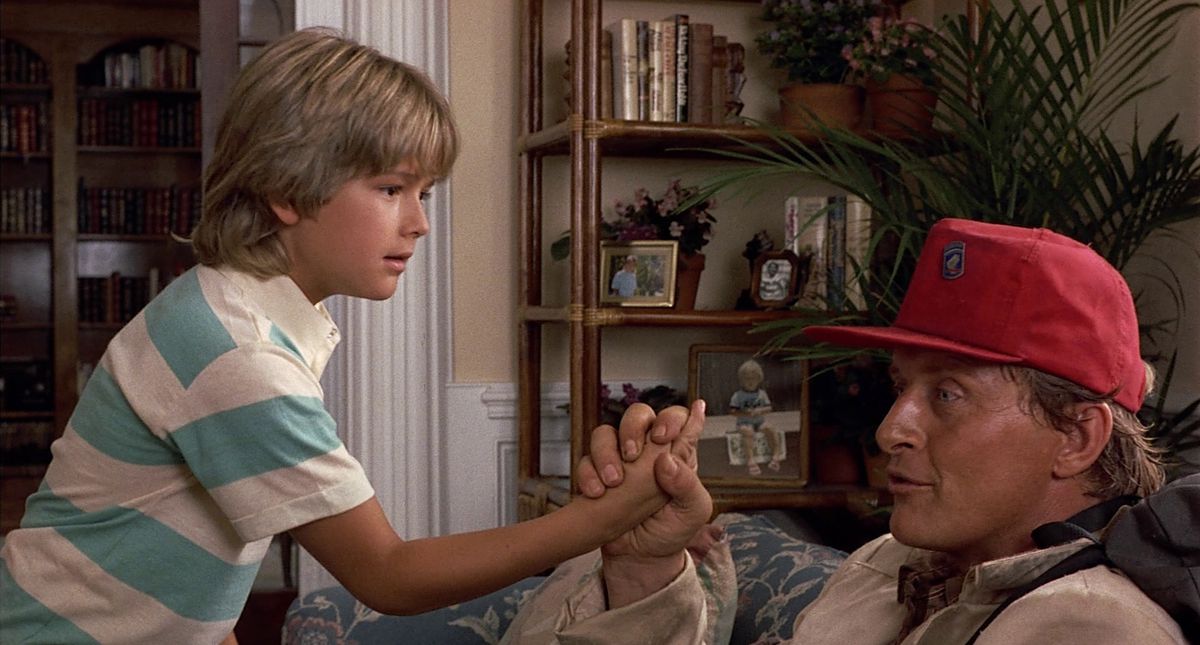
Blind Fury successfully transported the basic concepts of the original period Japanese story to the modern-day United States. Somehow, it all works surprisingly well. It retains all the humanity, humor, and action of its source material and even climaxes with a thrilling one-on-one duel between Hauer and king of the ’80s ninja movie Sho Kosugi. The producers had plans to turn Blind Fury into its own series, but poor box-office returns (despite good reviews) ensured this whitewashed chanbara film would sadly be a one-off endeavor. The film did go on to be a cable television and video store mainstay, where it eventually found its audience and cult status.
2008’s Ichi is a gender-swapped reboot and a legacy sequel that follows a young blind woman (also known as Ichi) as she follows in her missing mentor Zatoichi’s sword-swinging footsteps as a champion of the oppressed. The most acclaimed of latter-day Zatoichi efforts is The Blind Swordsman: Zatoichi from 2003, written and directed by acclaimed cinematic auteur Takeshi “Beat” Kitano. This multi-award-winning film is often labeled as a “reimagining” of the series, but it is steadfast in its reverence for the structure and tropes established by the original. Its story of Zatoichi, played by the director himself, stumbling into a war between rival yakuza gangs and vengeful geisha can easily sit side by side with the Shintaro Katsu entries and not feel jarring or out of place (minus some woeful early-2000s-era CGI blood).
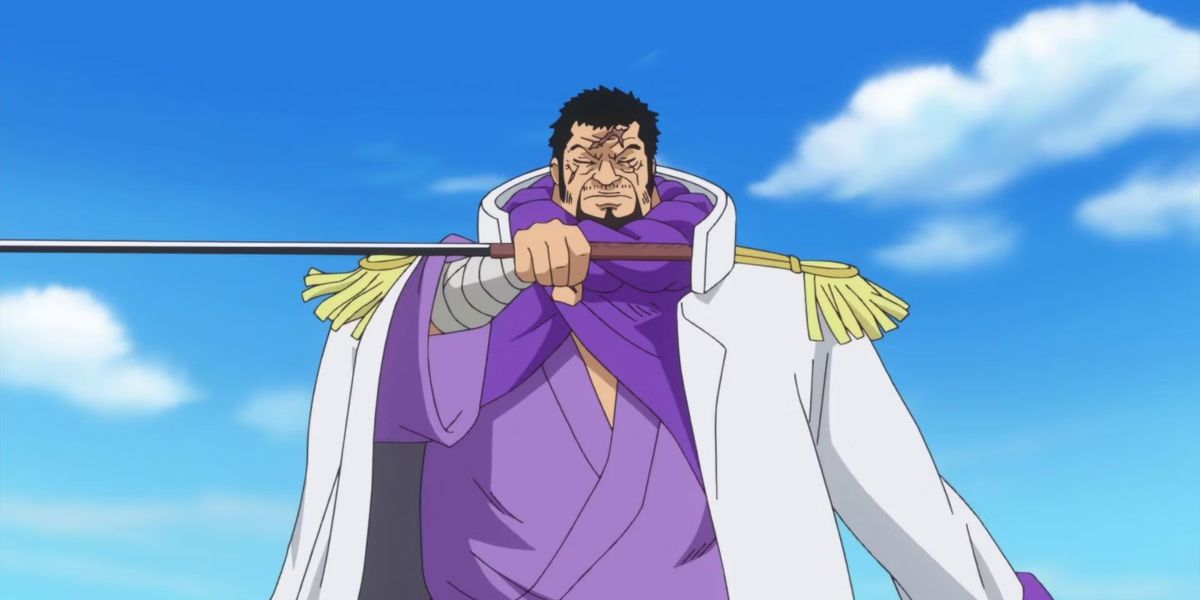
The repetition in such a long-running and beloved series (and its sequels) led to the character and its associated tropes being fully absorbed by pop culture in Japan. Zatoichi homages were commonplace, regularly popping up in television, games, comics, and (of course) movies. For example, Fujitora, a side character of the immensely popular pirate manga/anime series One Piece, is directly modeled on the character and uses Shintaro Katsu’s very distinct likeness.
These homages (and in some cases, blatant rip-offs) were not just limited to Japan. There were unauthorized sequels produced in Taiwan starring lookalikes and other low-vision characters popping up in martial arts films from Hong Kong (Master of the Flying Guillotine) and Indonesia (Buta: The Blind Warrior) during the series’ most popular years. Even now, as recently as three years ago, a South Korean movie was released, titled The Swordsman, that borrows heavily from the Zatoichi visual playbook. It’s a period riff on the Taken films about a retired sword fighter, with very limited eyesight, who has to begrudgingly return to his violent ways to save his adopted daughter from human traffickers. Even the U.S. produced a handful of faux-Zatoichis, like the 1994 HBO TV movie Blind Justice, where a Civil War-era blind gunfighter is tasked with protecting a child while transporting them back to their family. If that sounds familiar, it’s because it’s at least partially inspired by the eighth Zatoichi film (1964’s Fight, Zatoichi, Fight), in which Ichi does the same.
[embedded content]
The most widely accessible of these U.S. homages is Blindsided: The Game, which has officially been available for free on YouTube since 2018. This 45-minute short film, from Black Panther fight coordinator Clayton J. Barber and noted martial artist/stuntman Eric Jacobus (God of War) has over 7 million views on the platform. It’s admittedly light on plot, with a fairly standard story of a blind martial artist who comes to the aid of a local neighborhood grocer who gets in too deep with loan sharks. It more than makes up for its threadbare story by being heavy on kinetic and creative Hong Kong-style filmmaking and fight choreography that makes the established tropes of Zatoichi feel fresh. This stylistic choice in the short’s excellent fight design provides a tantalizing glimpse of what a bona fide Hong Kong action superstar Donnie Yen brings to the mayhem of John Wick: Chapter 4.
2010’s The Book of Eli is an excellent piece of sci-fi pulp that proves moving the elements of Zatoichi into wildly different settings doesn’t destroy what makes the stories resonate. It places a wandering blind swordsman (a magnetic Denzel Washington) on a holy mission into a Mad Max-esque post-apocalyptic wasteland full of marauders, wannabe warlords, and cannibals, yet it never feels incongruent. It demonstrates the ideas coined in the Zatoichi series are malleable enough to work in a variety of genres.
The Apple TV prestige television series See really tests this theory by completely inverting the established paradigm, setting its story in a different type of post-apocalyptic future where being born blind has become the status quo, causing an unprepared society to eventually collapse and regress to a more feudal state where the idea of vision and the world before has become a heretical myth spoken of only in hushed whispers. When tribal leader Baba Voss (Jason Momoa) discovers his twin children were born with the miraculous ability to see, he takes them on a journey across, with his sword in tow, to keep them hidden and safe from those who would harm or exploit them. It’s the most radical of all the nontraditional “blind warrior” properties, and yet it captures the spirit of Zatoichi exceptionally well with its more devolved setting and Momoa’s larger-than-life presence used in service of portraying a loving and devoted father. It also helps immensely that the action scenes presented take ample inspiration from the work of Shintaro Katsu.
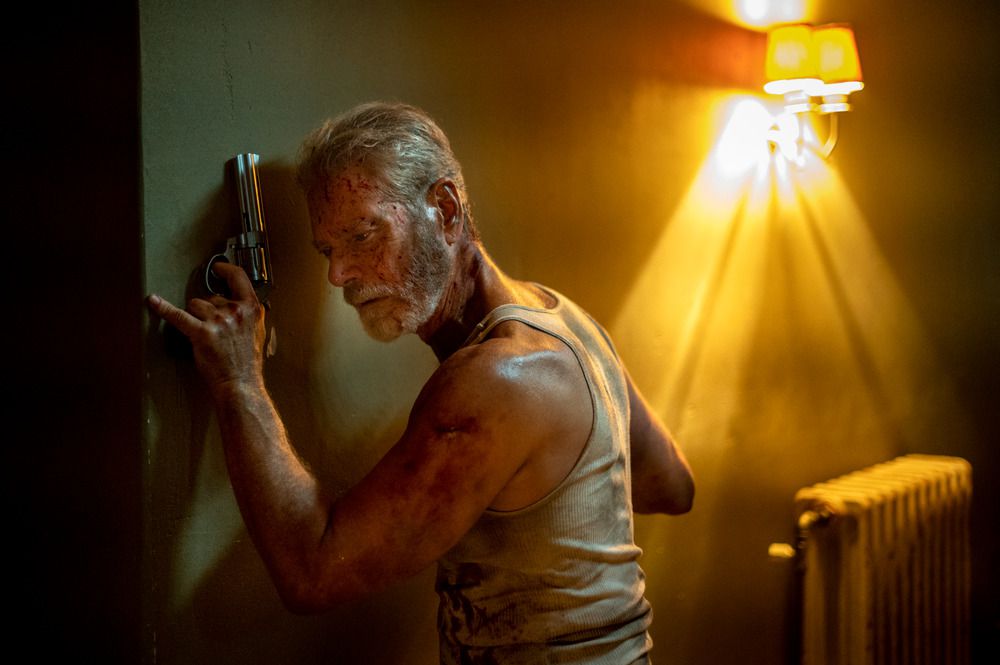
The home invasion film Don’t Breathe from 2016 also shows the flexibility of “blind warrior” tropes by repurposing them for maximum tension and dread in a horror setting, as Stephen Lang’s blind veteran chillingly turns the tables on a hapless trio of young thieves who have the misfortune of picking his home to rob in the middle of the night. This film by writer/director Fede Álvarez poses the question, “What if Zatoichi was the boogeyman?” Admittedly, it has more than one extremely questionable moment, but the film’s approach is unique. The sequel that followed five years later jarringly reframes Lang’s creepy villain as more of a typical antihero with an uninspired plot that involves him trying to rescue his young daughter from kidnappers. Álvarez returned to write the script for Don’t Breathe 2 and chose to go into a more standard Zatoichi-esque direction.
Of course, while Zatoichi’s character is unquestionably influential, it isn’t the only source for the “blind warrior” archetype. It could be argued the first glimmers of the idea can be traced back to the Norse myth of the god Odin blinding himself in one eye to gain perception and wisdom beyond all others. The tale is meant to express the idea that knowledge requires sacrifice, but another interpretation is that our eyes can betray us and there is more to perception than just seeing. It’s not that different from blind Master Po from the 1970s martial arts/Western hybrid TV series Kung Fu imparting wisdom to his young disciple, “Because a man can see, he does not look.”
The idea that removing a character’s ability to see can actually improve their ability to fight back is in itself a trope. It’s present in martial arts films like Bloodsport and Berry Gordy’s The Last Dragon, where performing tasks blindfolded is the final part of the heroes’ respective martial arts training. It even appears in lighthearted comedy films like Dodgeball: A True Underdog Story (Sudden Death!).
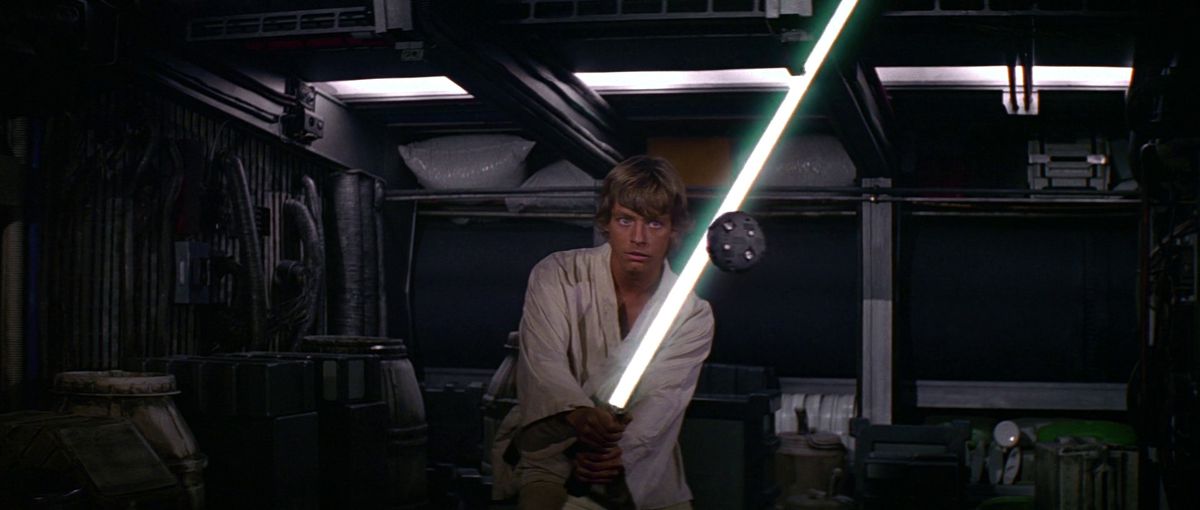
One of the most iconic scenes of this nature comes from Star Wars: Episode IV – A New Hope. When first teaching Luke Skywalker to use a lightsaber, Obi-Wan Kenobi encourages him to obscure his vision with a fighter helmet’s blast shield:
“I can’t even see… How can I fight?”
“Your eyes can deceive you. Don’t trust them.”
He implores Skywalker to “reach out with his feelings” and sense when the attack will come. Of course, Luke trusts in Kenobi and is successful. This moment is related to the other more literal reading of the Odin myth: The Norse god lost his eye to gain power.
There are numerous examples of this within pop culture, but to name just a few: Neo has his eyes destroyed in 2003’s divisive cyberpunk trilogy capper The Matrix Revolutions during a battle with Agent Smith, only to realize he has gained the ability to exert some of his messiah-like control in the virtual world over to the machines in the real world. Another is Kenshi from Mortal Kombat. He is a skilled martial artist but is no match for the machines, monsters, and demigods that populate the battle between Earthrealm and Outworld. In his insecurity, he is tricked into opening an ancient tomb by the evil sorcerer Shang Tsung, who blinded him but also allowed him to inadvertently obtain an ancestral sword, known as Sentō, that granted him superhuman abilities like telekinesis, pyrokinesis, and the ability to “see” through the sword itself so that his lost eyesight would not affect him in the battle for the future of reality.
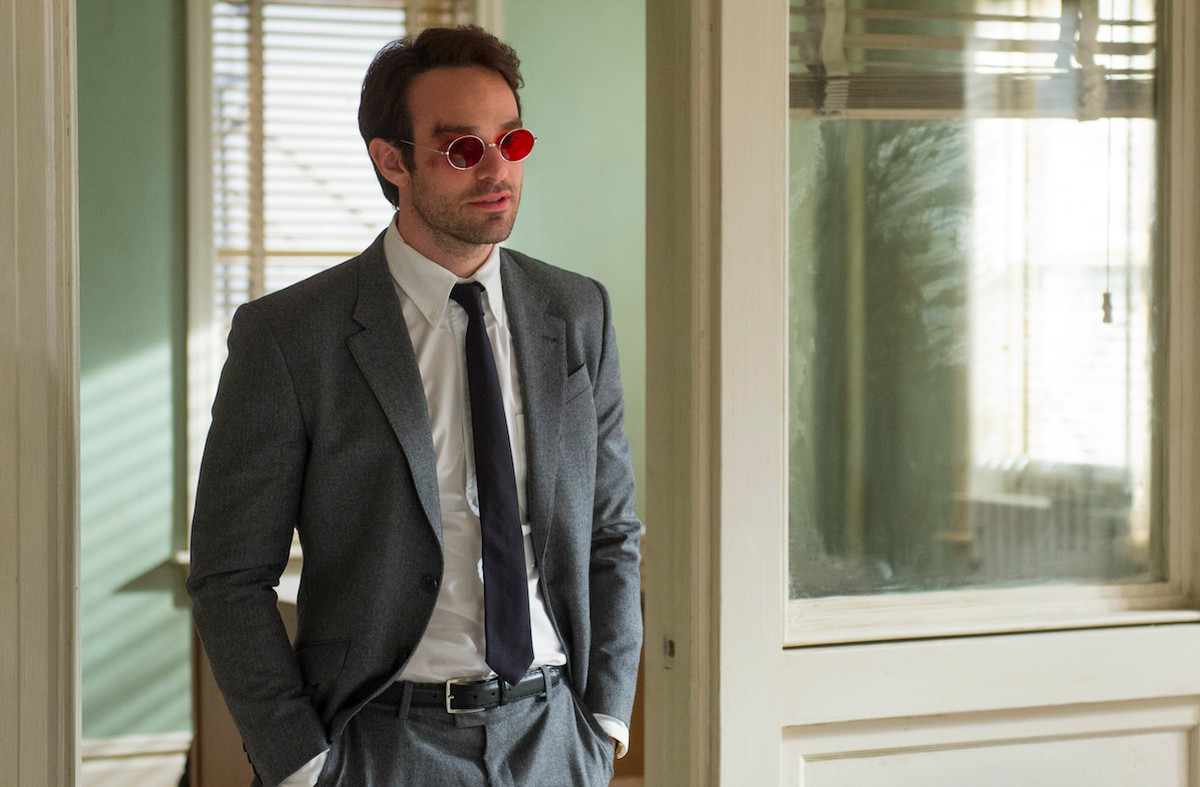
What are modern myths of magic, though, if not superheroes? And no superhero fits the “blind warrior” criteria better than Marvel’s Daredevil, a comic book character who gained superhuman senses after losing his eyesight in a childhood accident involving strange chemicals. The character created in 1964 by Stan Lee and Bill Everett was never that well regarded until the early 1980s, when artist/writer Frank Miller took over creative direction and moved Daredevil away from being a typical Marvel superhero comic into more of a gritty, urban vigilante story heavily influenced by ’70s-era crime and martial arts movies. Ninja clans, mysterious martial arts masters, and deadly female assassins mix with gritty street-level crime and complex morality tales to make the Daredevil stories under Miller’s watchful eye drastically different from anything else under the Marvel banner at that time.
The change proved popular, and the character was adapted multiple times into other media. The two most noteworthy are a 2003 movie and a Netflix series that ran for 39 episodes from 2015 to 2018. The film (starring Ben Affleck) is deservedly maligned but the series (starring Charlie Cox) was well plotted, well acted, and featured fight scenes that were staggering in their intricacy and execution, especially considering the tight schedules of television production.
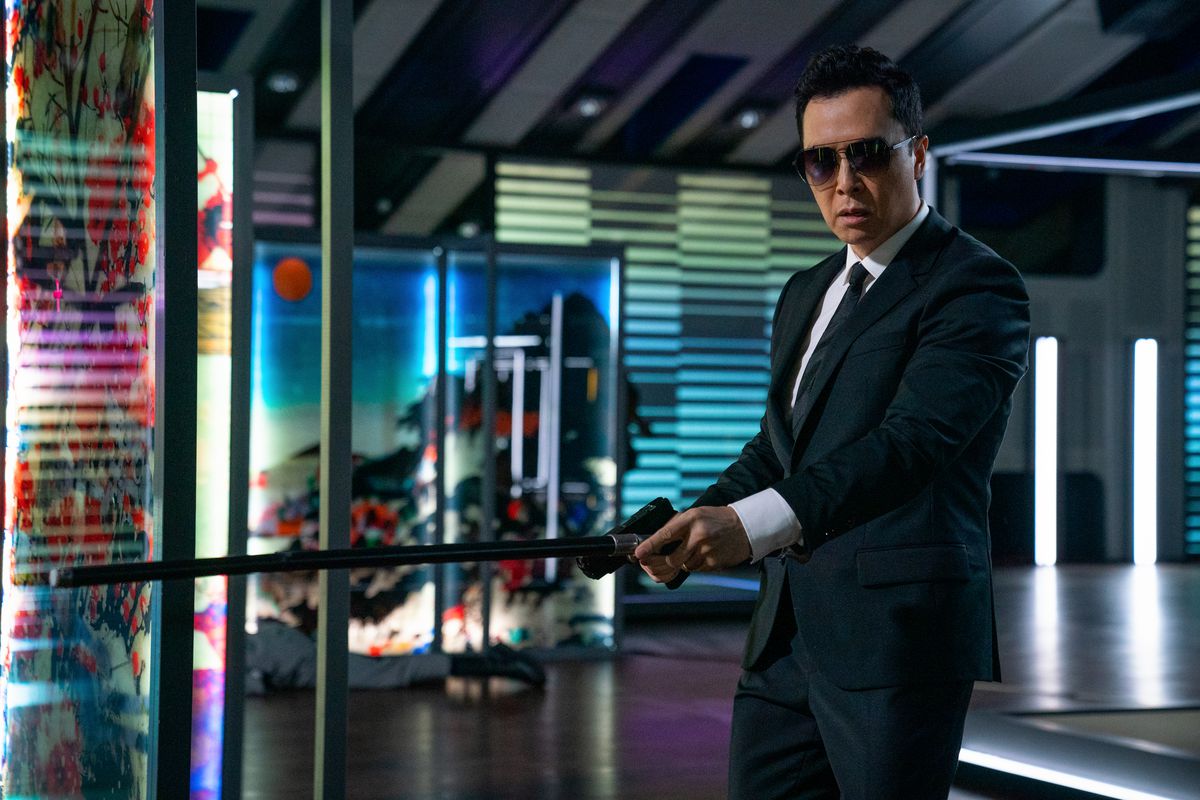
Finally, we have the science fiction warrior monk Chirrut Îmwe of Rogue One: A Star Wars Story, played by Donnie Yen in his earliest attempt at a Zatoichi-like figure. There is no doubt that for a non-Jedi he has at least some control and connection over the mystical entity known as the Force, as he is able to shoot a TIE fighter out of the air at one point, avoid blaster fire, and feel shifts within it. Maybe through his self-determination, belief, and effort (“I’m one with the Force; the Force is with me”) he forged that connection, despite his disability. That thought sums up so much of the eternal appeal of the “blind warrior” archetype.
We want to believe that if we are faced with a disability or an obstacle in our own lives we will have the patience, strength, and belief in ourselves to not only overcome it but to thrive and be mighty in defiance of it. From Shintaro Katsu’s humble Zatoichi first captivating Japanese audiences 60 years ago to Donnie Yen’s suave and dapper Caine exploding into the John Wick universe in the present day, these characters speak to that desire. The “blind warrior” archetype is a timeless symbol of personal fortitude and the unending potential of the indomitable spirit within us all.
_____
The Zatoichi film collection (1962-1973) is available to watch on The Criterion Channel.
Blind Fury is available to watch for free with ads on Crackle.
Blind Justice is available to watch on Classix.
The Blind Swordsman: Zatoichi (2003) is available to rent on purchase on digital VOD platforms like Apple and Google Play.
Ichi (2008) is available to purchase from Prime Video.
Book of Eli is available to watch on HBO Max.
Don’t Breathe is available to watch for free with ads on Tubi.
See is available to watch on Apple TV Plus.
Daredevil is available to watch on Disney Plus.
- SEO Powered Content & PR Distribution. Get Amplified Today.
- Platoblockchain. Web3 Metaverse Intelligence. Knowledge Amplified. Access Here.
- Source: https://www.polygon.com/entertainment/23644691/blind-warrior-action-history-john-wick-zatoichi-donnie-yen



